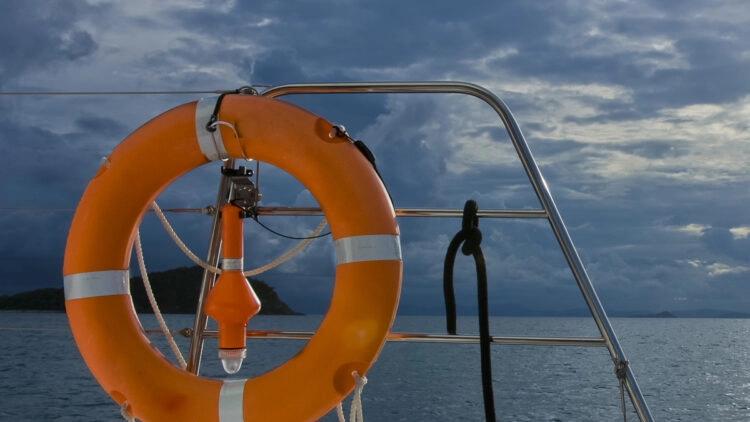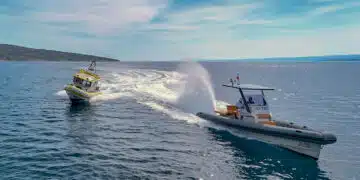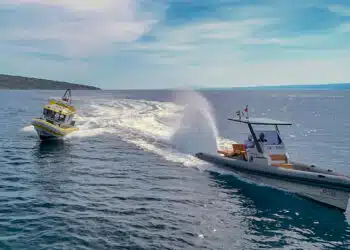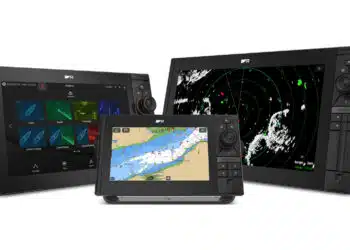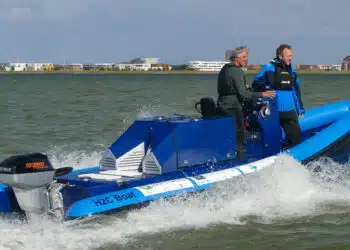Rescue equipment on board is like a fire extinguisher at home and an airbag in the car: hopefully you never have to use it or deploy it. But when an emergency occurs, everything must be ready and the crew must know how to use the safety equipment properly. SeaHelp explains which rescue equipment should always be there – on the small, coastal trip and on the big trip with motor or sailing yacht..
No matter how short the route is and how calm the sea glistens in the sunshine: indispensable for every crew member on every trip is a life jacket, the basic equipment of the many different means of rescue. While children and non-swimmers have to put on their vest already on the jetties of the harbor, skipper and crew can decide for themselves when to put on the vest. On small boats with a lot of (splash) water contact that are only used for a short trip, solid vests, often called dinghy vests, are practical, but do not protect against drowning if the person is unconscious.
Automatic life jackets are safer
Significantly safer are automatically deploying life jackets, which are equipped with a CO2 cartridge and inflate automatically on contact with water. These vests, which must have a crotch strap, are faint-proof due to their high collar and keep the head of the person overboard above water for a long period of time. To do this, the life jacket must have a permanently attached signal whistle to audibly alert the person floating in the water.
SeaHelp Extratipp: Before starting the journey during the inspection of the life-saving equipment on board always check whether as many life jackets as people are on board. For automatic life jackets, check the date of the last safety service and adjust the size of the life jacket individually. If you often travel on different ships, you should invest in your own life jacket, which is adjusted to your body size and weight and has a good fit.

For all those who do not only undertake a small, coastal boat trip in the most beautiful sunshine and doldrums, lifelines with carabiners belong to the basic equipment in addition to life jackets. They are attached to the lifejacket and fastened to the deck of the boat to prevent a person from slipping overboard in rough seas or heavy heeling. Again, be sure to have one life jacket and one lifebelt per person.
SeaHelp Extratipp: Never hook the lifebelt into the railing, but as centrally as possible in the cockpit. The line must be so long or short that you can still operate everything, but not fall outboard.
If someone does fall overboard, it is important to get them back on board as quickly as possible. A visible and easily removable lifebuoy with a line, which is thrown to the person who has fallen overboard, helps here. As an alternative to the classic life ring, there are also horseshoe-shaped life rings that can simply be placed around the neck.
SeaHelp Extratipp: The life ring necessarily equip with a waterproof lamp, so that the person in distress can draw attention to himself even in the dark and poor visibility.
Perform safety check before the trip
Before setting sail, it is the skipper’s responsibility to familiarize all crew members with the safety equipment on board. Everyone needs to know where which life-saving equipment is kept and how to operate it – it may be the skipper who goes overboard or is no longer fully operational due to an accident!
Signal ammunition must be stored in an easily accessible, dry location on board. Standard equipment includes hand flares and flares. The hand flares can be ignited with a simple flick of the wrist and shine for about one minute in striking orange-red hues, visible from afar. The flares have a height of climb of 300 meters and draw attention to the casualty for around 30 seconds. Also particularly effective are buoyant smoke signals that are thrown into the water and mark the accident site for up to 5 minutes by emitting a conspicuous orange smoke.
SeaHelp Extratip: Not every charter yacht is equipped with signal ammunition and hand flares as standard. Therefore, many skippers take their own waterproof box with the necessary safety equipment, which, however, may not be transported in the aircraft.
Remember the maintenance intervals of the rescue equipment
Only in the very worst emergency, when the ship is in danger of sinking, should the crew lower the life raft lashed to the deck into the water and slowly and without panic transcend into the rescue inflated plastic raft. The life raft belonging to the ship must have space for as many people as there are crew members on board. Prior to the start of the cruise, the skipper must explain how to launch and deploy the liferaft in an emergency as part of the general safety briefing. As with automatic life jackets, it is also important to follow regular maintenance intervals.
SeaHelp Extratipp: In special seminars on safety at sea, water sports enthusiasts learn the correct handling of the various life-saving equipment and can try out the different products. In training sessions in the pool is practiced to climb with oilskins in a life raft and how it feels to float carried by the life jacket in the water.
Unfortunately, not every (charter) yacht has an epirb. The abbreviation of the portable emergency beacon stands for Emergency Position-Indicating Radio Beacon. The principle is simple and enables maximum safety: if an alarm is triggered anywhere in the world at the beacon, the radio transmitter sends out an emergency signal via GPS that is uniquely assigned to the ship. In this way, the damaged yacht or person who has gone overboard can be located quickly with the help of the worldwide satellite navigation systems. The various systems are explained in detail in this SeaHelp technology article.
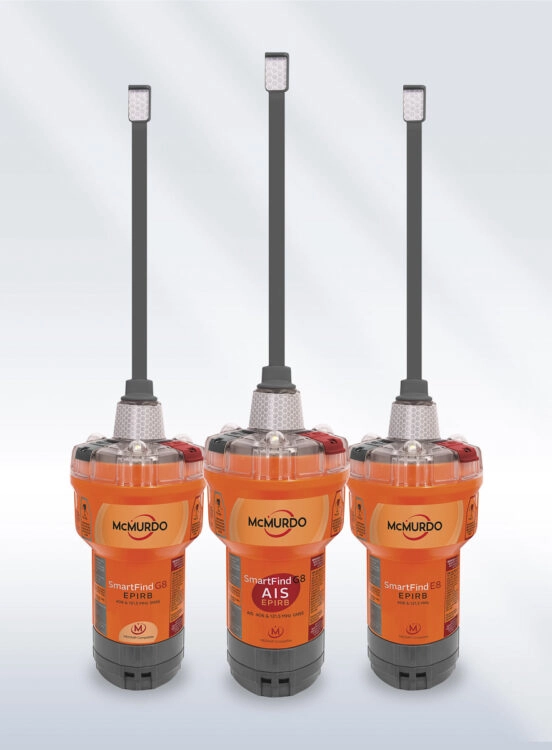
Epirb and PLBs facilitate tracking
The regionally responsible Maritime Rescue Coordination Center (MRCC) will coordinate the rescue. Onboard epirb should be triggered in the event of serious accidents or severe damage to the vessel, when the yacht can no longer reach the nearest port under its own power and without endangering the safety of the crew. In extreme emergencies, when the crew has to abandon ship and board the life raft, the portable (!) Epirb should always be taken along, otherwise the rescuers will locate the sinking yacht and not the crew in need of help. Epirbs used on board are powered by lithium batteries, which have a very long life and are not rechargeable. Because of these batteries, they are considered “Dangerous Goods” and can only be shipped as hazardous materials, so you can’t take them stowed in your carry-on luggage on an airplane trip.
SeaHelp Extra Tip: There are two varieties of epirbs. Large devices that are allowed on the ship and portable, personal devices called PLBs (Personal Locator Beacons). Find out if your vacation yacht is equipped with this system before you even start your charter. Alternatively, a personal PLB is recommended.
Small like a cell phone and easy to carry in your jacket pocket are personal PLBs – Personal Locator Beacon. They transmit a distress call on the same frequency as an Epirb, but are registered to a person as an alternative to the yacht. So you can be used on different ships as personal safety equipment. In Austria, the devices must be registered with the telecommunications authority. In Germany, you can not register these devices at all, but must register them in England.
AIS devices with MOB function
Unfortunately, there are currently no devices in which the functions of an Epirb are offered combined with those of the Automatic Identification System (AIS). AIS was originally used in commercial shipping to avoid collisions at sea and has been increasingly used in recreational shipping for several years. It transmits accurate data on vessel type, size, direction of travel and speed and has a MOB (man overboard) function. If this is activated, surrounding vessels that have an active AIS on board are alerted to the accident by an alarm signal.
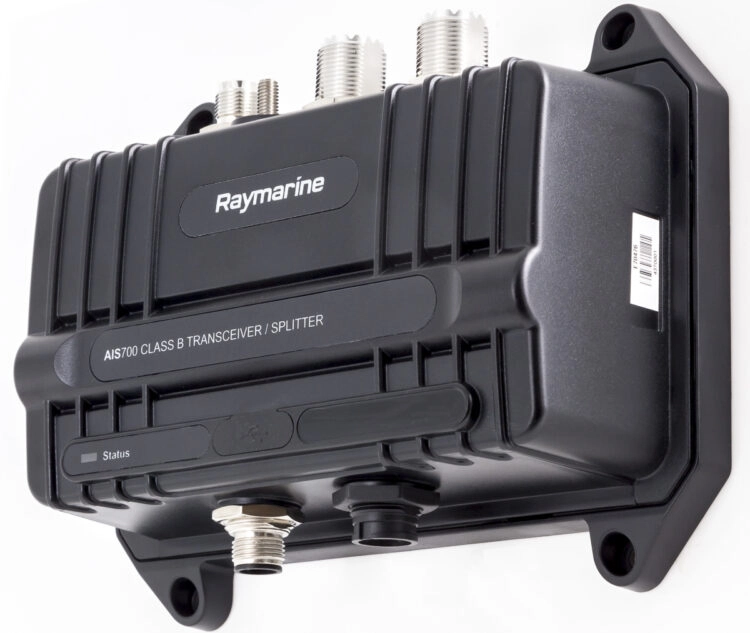
SeaHelp Extra Tip: Those on long trips far from coasts and busy shipping lanes should use satellite-based PLBs on a 406 MHz basis for the entire crew! If the call for help is activated by a person who has gone overboard, the rescue chain is activated worldwide via the IMRCC (International Maritime Rescue Coordination Center). For charter sailors, it is better to use a portable device with the AIS system that can be seen by all vessels in the area that also use AIS. Some AIS transmitters can be attached directly to the life jacket and transmit on channel 70 in addition to the AIS frequency, triggering a DSC alarm that notifies surrounding vessels of the distress at sea. However, finding a shipwrecked person using only AIS is often made difficult because the two VHF antennas must be in (line-of-sight) contact with each other. High wave troughs make visibility on impossible, so a PLB, which can also be mounted on the life jacket, is much safer.
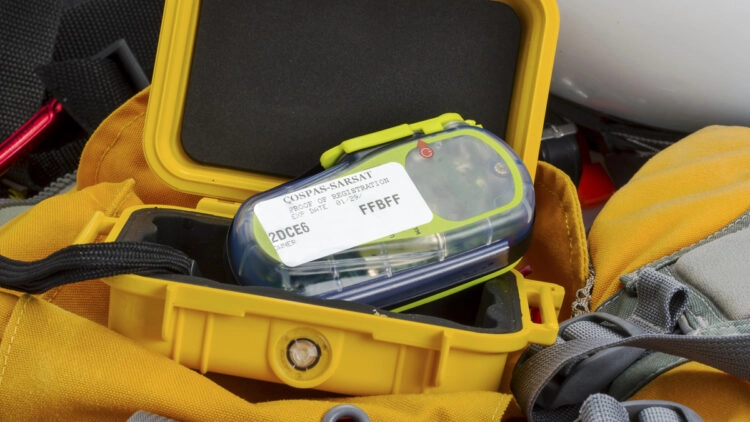
SeaHelp Extra Tip: The chance of being found quickly in the water is increased by using seawater dyes. These small cartridges or even pouches, which you attach to your oilskin jacket or life jacket next to a strobe light, contain an environmentally friendly citric acid-based powder. In the water, it creates a large, bright colored spot so that the person who has gone overboard can be easily located, especially from the air.
The worldwide Iridium satellite communications network is also utilized by the small Inreach devices from Garmin. This not only makes it possible to receive and send messages far away from any cell phone coverage, but also to send an SOS emergency call in which the exact position is transmitted. The emergency call sent lands directly in the Garmin International Emergency Response Coordination Center (IERCC), an international rescue center staffed 24/7. This is a private provider that must first interface with the IMRCC in the event of a maritime emergency. During the coordination of the rescue operation, the IERCC is in contact with the sender and notifies the stored emergency contacts in parallel. In contrast to the global assistance provided by the IMRCC, an active paid subscription is required to use the Inreach technology; the user can choose from a variety of plans the one that suits him or her, limited to several weeks or for a longer period of time.
SeaHelp Extratip: Devices such as Garmin’s small, portable inReach-Mini2 and its larger siblings with more features are the perfect companion for anyone who spends their free time on remote trails or in lonely spots. Whether on a climbing tour, a bike trip, an adventurous canoe expedition or far from land cover at sea: the small devices not only enable direct communication when the cell phone has long since lost reception, but also offer maximum individual safety via the SOS emergency call button. By being tied to a person and not the ship, they can be conveniently taken anywhere and stowed easily accessible in the cockpit or jacket pocket.
Information and advice
The specialist for consulting and installation of yacht electronics is Werner Ober (https://www.yachtelektronik.at/) in Lustenau, Austria, which offers electronic components from Raymarine, FLIR, McMurdo, KVH and is also a partner of ICS, Navionics, C-Map, DigitalYacht, Banten, ActiSense, Comar, ScanStrut and numerous other suppliers. The portfolio of the family business includes the design of complete yacht electronics equipment for various types of boats from motor yachts to day cruisers and sailing yachts to operational boats. The systems are tailored precisely to the customer’s requirements, and a complete wiring plan can also be drawn up on request. The portfolio is rounded off by service and repair services, some of which are carried out in the company’s own workshop.
Werner Ober GmbH & Co KG
Yacht electronics
Reichsstrasse 38
6890 Lustenau | Austria
Phone: +43 (0)5577 824 19
Email: werner.ober@yachtelektronik.at
Web: www.yachtelektronik.at


